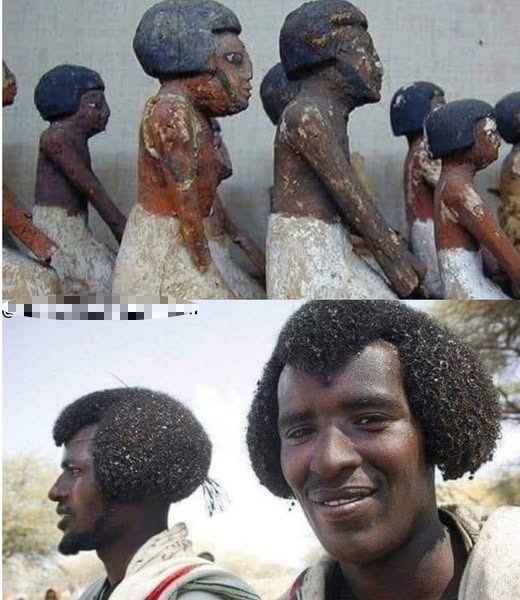
In which even the university of Cambridge admits that ancient Egypt was Black African

Musicians at a banquet. Mural from the tomb of Rekhmire, vizier under Thutmosis III (1490-1439 BCE) and Amenophis II (1439-1413 BCE). 18th Dynasty, New Kingdom, Egypt.
In 2006, the Cambridge University art and antiquities museum, Fitzwilliam, did a commendable thing when they, following a £1.5 million renewal project, launched their new Egypt galleries. The idea was to showcase ancient Egyptian religion, magic, writing, ritual and to redisplay the collections in a contemporary and dynamic way.
But that was not all. In a rare condemnation of the historical revision of ancient Egypt, the Fitzwilliam Museum admitted that, not only does Egyptology have a European bias, but that the bias means that our understanding of the earliest human civilisation is gravely erroneous. As they put it, “People mainly look at Ancient Egypt through a European bias. This is because the majority of books on Egyptology are written by researchers of European, or North-American backgrounds.”
Instead, the Fitzwilliam Museum decided to adopt an Africa-Centred approach to ancient Egypt.
What does an Africa-centred approach to Egyptology mean? Well, first of all, it acknowledges that Ancient Egypt “is part of African culture” and that while the word ‘Egypt’ is what the Ancient Greeks named ancient Egypt, the original inhabitants called it ‘Kemet’, which literally means ‘the black land’. Therefore, by naming the museum gallery “Virtual Kemet”, the curators intended to remind people that Ancient Egypt is an “African civilization and that whilst the culture had contact with people from other civilizations, it was essentially African in its culture and well as its geographical placement.”
The museum insists, “There are many links between ancient Egyptian and modern African culture, ranging from objects such as headrests to hairstyles such as the side lock, and this and other evidence support the idea that it was an African culture in addition to being geographically in Africa. For these reasons Egypt is seen by people of African descent as part of their cultural heritage and history. […] Egypt was an African country, and their artists depicted the Egyptians as Africans, with black skin and тιԍнтly curled hair.” [Emphases mine]
If there remains any doubt about the heritage of ancient Egyptians, the museum declares, “If we look at the skin colour and also facial features on representations of Egyptians, many are what we would consider today to be Black African.” However, even if “we leave colour aside for a moment, we can also find out a great deal from looking at the facial features shown on Egyptian statues. Here, there can be no doubt that we are dealing with people who were African. Faces were broad with high cheekbones and the jaws are typically strong. The noses are also broad and the lips are generally full and fleshy in appearance.”


